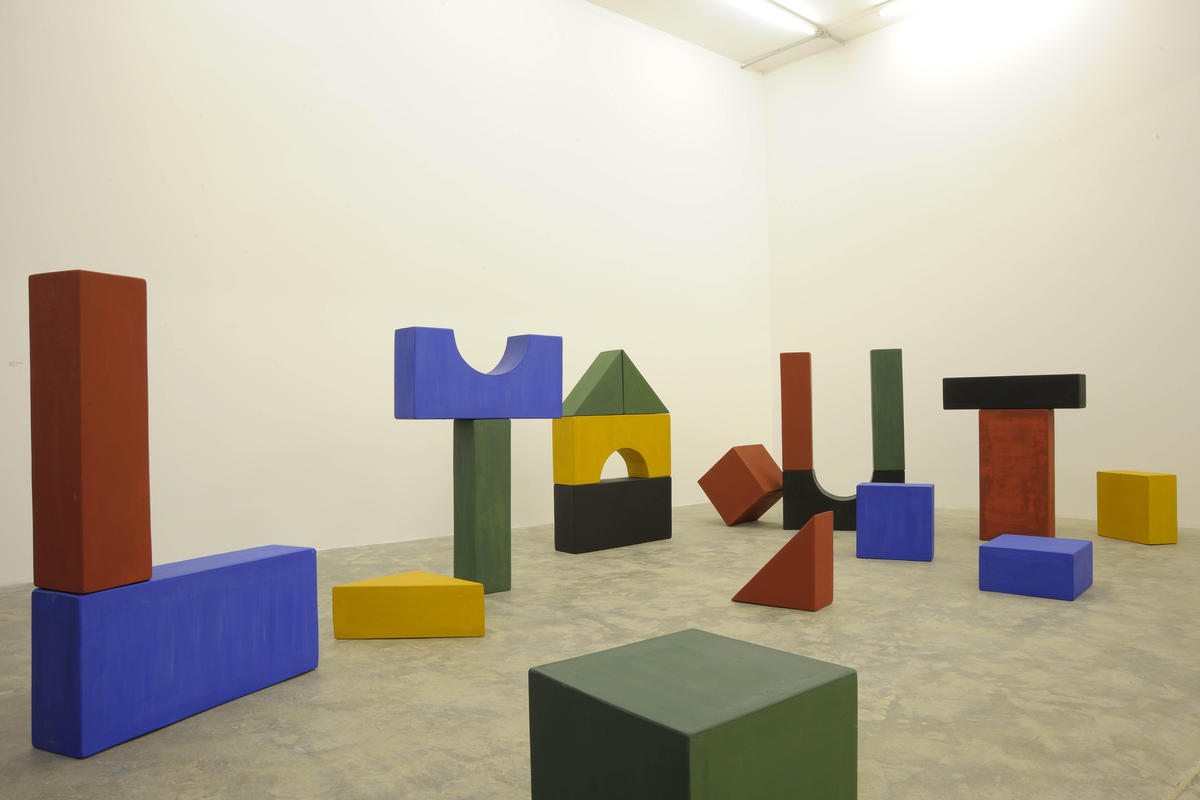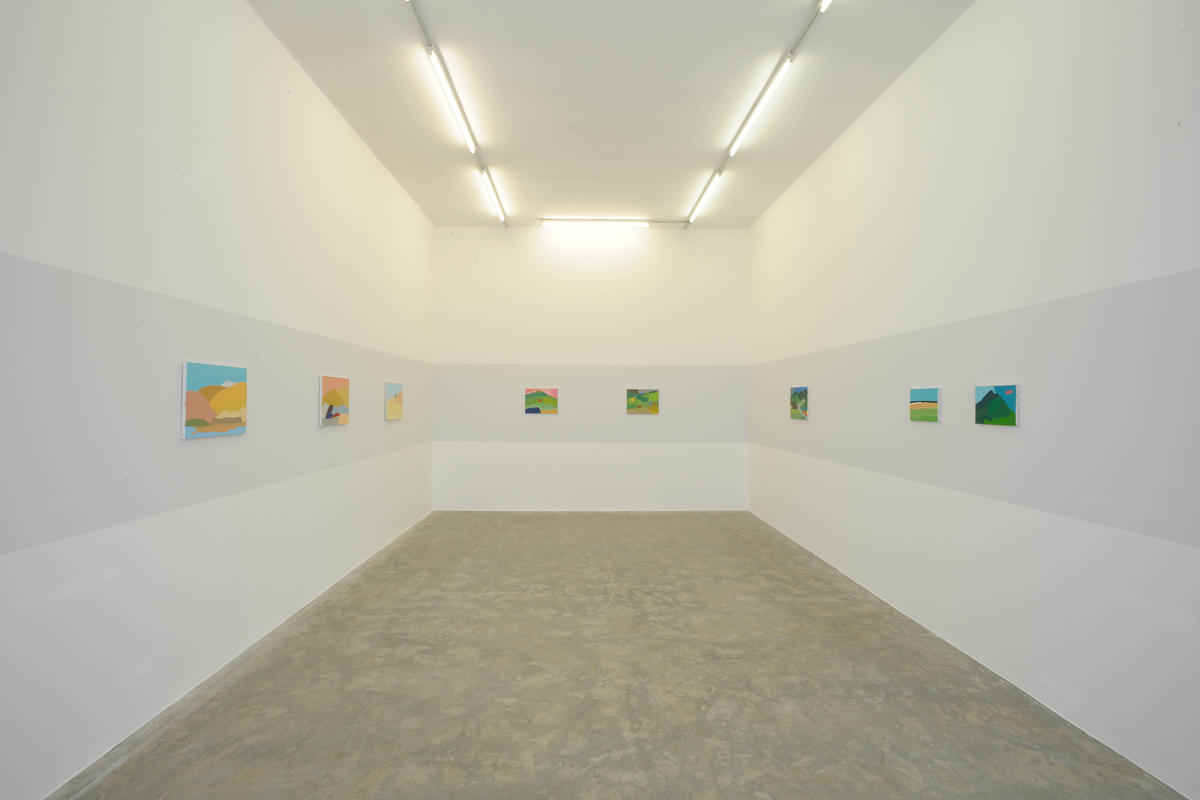
Beirut
Yto Barrada: Play
Etel Adnan: Paintings and Drawings
Sfeir-Semler Gallery
April 22–July 10, 2010
Yto Barrada’s Beau Geste — a three-minute 16mm film about a tree trunk that the artist transformed with spry activism and artistry — apes the tone and style of a public service announcement or promotional spot. Barrada quickly lays the groundwork: a single palm tree stands on a vacant lot in the crowded city of Tangier, where, in a single year, some five thousand building permits will be granted; the tree is the only thing preventing the owner of the lot from filling that patch of open space with a concrete building; but it’s sick, and if the trunk continues to rot, it will fall, and another small piece of sky will disappear from view.
One Sunday, over the course of five hours, Barrada and a small crew set out to save the tree by cutting out the disease, filling the hole with rocks, and propping up the trunk with concrete. This act of heroism gave the tree a fifty-fifty chance of survival. If nothing else, its concrete prosthesis would make it harder for the owner to knock it down and remove. Beau Geste’s playfulness, its humor combined with cynicism, a lurking sense of fatalism, and an undercurrent of the sublime, made it a document of a performance in which the action was as compelling as the film, and vice versa.
Barrada’s show — aptly titled ‘Play’ — constituted one half of a double exhibition marking the fifth anniversary of the Sfeir-Semler Gallery in Beirut. Her work filled one side; on the other side was an exhibition of paintings and drawings by Etel Adnan. Adnan’s works — all diminutive landscapes verging on abstractions, reminders of the pleasures of painting and the resonance of textured brushstrokes — were hung on a wide gray stripe facing the city. In daylight hours, the sun streaming in served to amplify Adnan’s mastery of color. The placement also created an intriguing correspondence between the artist’s interior landscapes and the facing views of urban sprawl.
In addition to the fact that there is a nearly half a century between the two artists — Adnan was born in 1925, Barrada in 1971 — they work in very different media. Adnan is a poet and playwright for whom painting is a practice in the old-fashioned sense of the word. Barrada is a photographer and filmmaker who often uses forms such as posters and toys. At the same time, both are ferociously intelligent; both lend shape and texture to their ideas. Political issues and tensions are never absent from the work of either artist, burning slowly and calmly.
In addition to Beau Geste, Barrada’s show featured Gran Royal Turismo, a modified automated model of a miniature track that wound through the landscape of a threadbare village. From a tunnel gouged into a hillside, a tiny convoy of seemingly presidential cars emerged. As it traveled along the track, resplendent green palm trees rose from a series of holes in the ground. A drab facade swiveled to reveal a whitewashed wall. Moroccan flags fluttered in an artificial breeze. The piece was a comment on power, short-term beautification schemes, and the phenomenon of the third-world motorcade. Like much of Barrada’s work, it treated history, colonial legacies, modernist notions of progress, neoliberal economic development agendas, and environmental degradation, without ever coming across as didactic.
Barrada’s other works included an enormous, faintly nostalgic aluminum and steel sculpture of a palm tree, lit up with old-school colored light bulbs; a wall work titled Tectonic Plate (2010) that rendered the world as a wooden game board; a series called Morocco Iris Puzzle that invited much public interaction; and Lyautey Unit Blocks, a roomful of colorful sculptures that looked like a children’s playground and referenced the first French resident-general of Morocco, who kept the occupation of the country going through World War I.
Barrada is the first artist to have truly taken on the cavernous and imposing Sfeir-Semler space and bested it. She painted the walls of her show in broad stripes of pink, yellow, and blue and played confidently with scale. It would have been great to see a show in which Adnan and Barrada truly collaborated or allowed their works to mix. But even when physically opposed, they made for a wonderful pair.
